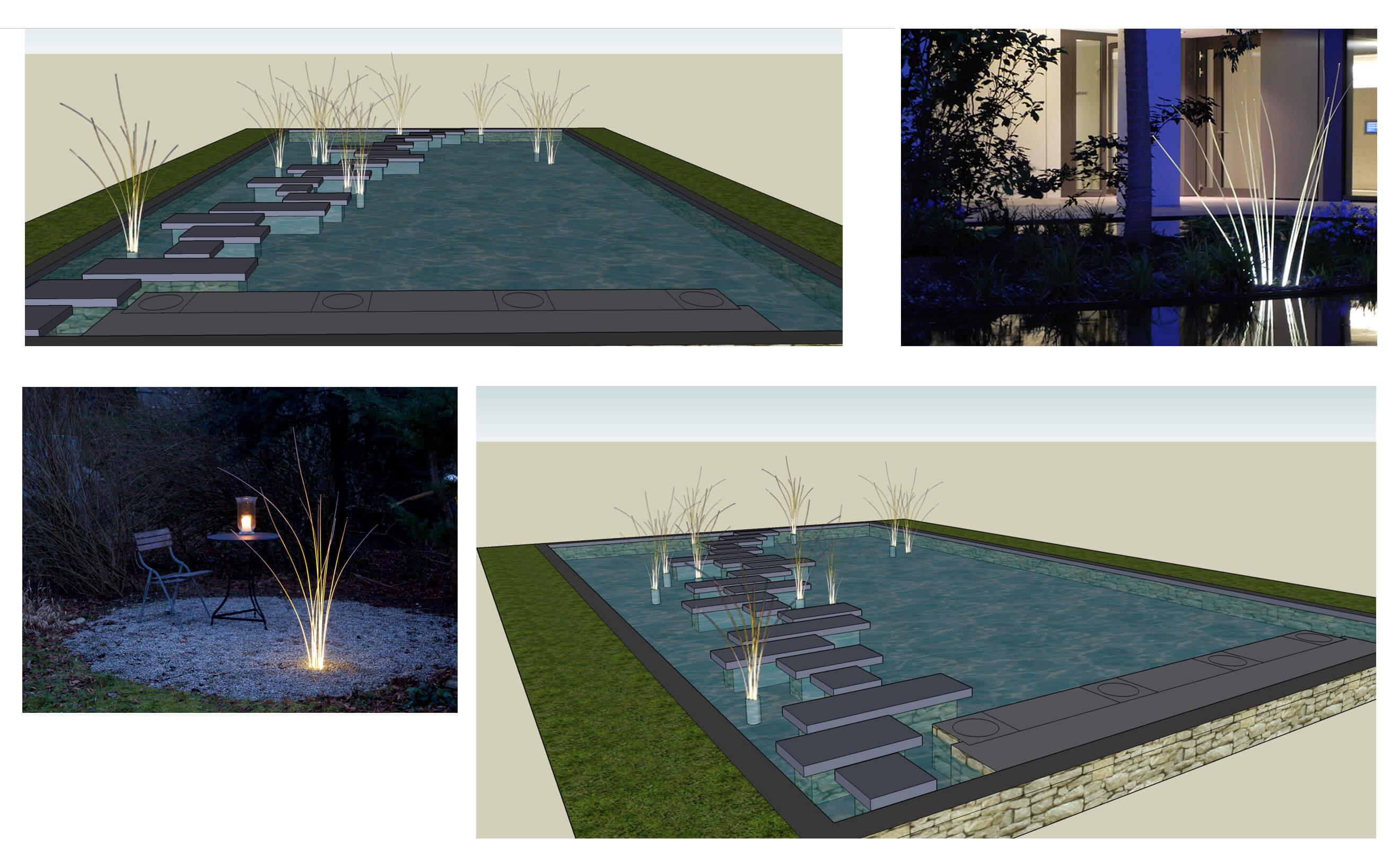

Garden Lighting
Lighting your garden and the exterior spaces around your house is a dream for many people. It’s not easy to do well unless you have a clear canvas or are starting again with a major renovation. Hard landscaping is unforgiving of mistakes; if you’ve forgotten to put in a cable or have put a cable in the wrong place, it’s a tricky and expensive issue to fix.
With all that said, garden lighting or simply lighting the space around your house is incredibly powerful when done right. We work on many garden lighting projects, frequently as part of a new build and increasingly as standalone pieces of work.
External lighting in Dark Skies areas or similarly sensitive environments calls for a slightly different approach. We can light an urban garden in a different way that we might light a garden in an isolated rural setting. There may be things we simply won’t do in a rural location. However, we apply the same thinking to all our garden lighting projects. Light only what you want to light, when you want to light it and with the appropriate amount of light.

Light your focal points
Think about what your focal points are; if you light it you will look at it. If you don’t have natural focal points, consider creating then. Think about the space as a whole with those features you’d like to look at and how you use light to connect one space with the next.
As an example, you might want to uplight some feature trees, but if these are a long way apart from each other them make sure that there is some connecting light at low level between them. That might be through using spike spots in the planting or a discrete wash across a path. You want to avoid spotty ‘islands’ of light with big seas of dark between them. A little light goes a long way at night so this is an area where less really can be more.

Think about the cabling infrastructure well in advance
It’s common for garden lighting projects to be considered separately from lighting inside the house. That’s often simply a function of a building project’s timings or it might be that the garden design is a new piece of work. Even in a phased project it’s important to try to plan and make allowance for possible future lighting needs. It might be that you make provision for future external lighting before you do the detail design. If that’s the case, start from the inside of the house and then follow through to the outside.
- How many circuits might you need?
- Where will you switch or dim them from?
- Are you using a lighting control system?
- If so, where will the dimming/switching modules be located?
Once you’ve looked at connectivity from inside to outside, consider any hard landscaping. Moving cabling within planting beds is relatively easy, but make sure you have cable (or even better conduit) going under your hard landscaped areas (paving, walls).
 Garden lighting mood board – decorative fittings for a pond
Garden lighting mood board – decorative fittings for a pond

Design out points of failure
If water can get in, it will. Water ingress is the most common cause of external fittings failing. Try to design out points of failure by planning each link in the chain: the fittings themselves, the connections and the overall approach to cabling.
We’ve written a longer post on how to design out points of failure on the blog but in summary it’s important to take a end-to-end view of each circuit. Use high quality fittings, we’ve a selection on the website, and make all connections in the driest environments you can.

Garden lighting fittings
Related posts
-
![Mike Hawtin, Dark Skies Officer at the North York Moors National Park, briefing the lighting design team at Brilliant]()
12 Apr 2022
Dark Skies – designing lighting schemes for sensitive areas
The lighting design team at Brilliant was really pleased to welcome Mike Hawtin from the North York Moors National Park to talk about Dark Skies. The North York Moors National Park was designated an International Dark Skies Reserve in December 2020. We invited Mike in to talk to the lighting…
-
![Step lighting detail. Small LED accent lights setting into stone walls shining across stone treads]()
13 Sep 2020
Design out points of failure for lower hassle garden lighting
If water can get in, it will. This is the most common cause of external fittings failing. It’s inmportant to design out points of failure by planning each link in the chain
-
![Close up detail of external lighting on a new build stone and timber house]()
16 Oct 2018
External and internal lighting – a new case study
Our latest finished project demonstrates how lighting can help make the most of a building’s situation. Lighting helps tie the outside and inside together while bringing out the richness of the natural building materials. This new build home is situated in the beautiful North Yorkshire Moors National…
-
![External lighting in a country garden]()
10 Aug 2018
Has this summer made you think about your exterior lighting?
The weather might be slowly returning to normal but has this incredible summer made you think about making more of your garden? Specifically, has the fantastic weather encouraged you to spend more time in the garden in the evenings? If so, you might well want to look at your…










